electric_nz
1 kW
- Joined
- Jan 7, 2019
- Messages
- 308
These are amazing! Such neat and tidy work too. Love the old school prelude
jonescg said:I used aluminium and had them nickel plated using an electrolytic process. Not cheap, but it appeared to work. It leaves a dull grey metallic look, and if you put it under a microscope it probably looks like a stack of spheres. In any case, the layer of nickel meant there was enough resistance to generate heat during spot-welding to take a 0.07 mm nickel tab.
[youtube]jumFyhtjylM[/youtube]
Multiply that about 10,000 times...
[youtube]N6nKPmhSE5g[/youtube]
In the end, the poor spotwelder had done so much work those long electrodes were worn down to a nub, my hands were sore and burned, but I made 4 complete double-sided modules.
more welds.jpg
Nickel plated aly sucks.jpg
20210118_201035.jpg
20210201_174648.jpg
top side welded.jpg
The next step was to coat the welded faces with a thermally conductive epoxy resin and glue a sheet of G10FR4 to it on either side.
thermal epoxy going on.jpg
Module glued up.jpg
End result - a pretty much sealed, waterproof, rigid, robust battery module. The BMS wiring went to a pair of ZEVA BMS modules as 12s units plus four thermistors per module.
jonescg said:Hi Art,
I used a filled resin from a firm in China. Its a two part mix with a thermal conductivity of around 1.4 W/mK which is typical for these non-conducting resins. I'll look it up.
Edit: The thermally conductive epoxy resin is from a company called U-sheen www.sheenthermal.com And it's product ID is epoxy S8960.
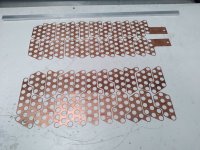
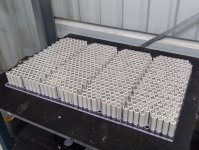

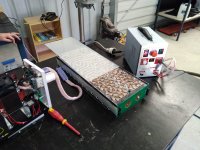
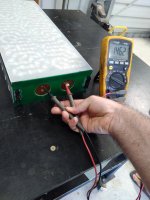
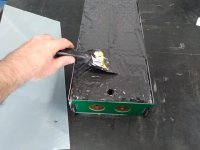
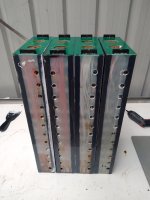
Very nice battery building,Stuart Jameson asked me to build a special battery for a unique project - salt lake racer at Lake Gardiner.
View attachment 318615
View attachment 318616
View attachment 318617
One problem with these LiPo cell packs, is that you don't know the exact dimensions of the battery until its built. The cell supplier might assure me they are 7.8 mm thick, but they are more like 8.0 mm thick, and after stacking 40 of them together you have an enclosure which is a wee bit too small...
View attachment 318618
He specifically asked me not to glue the cells in place as he wanted the option of taking them apart. I advised against it, but the idea was it would so a handful of runs on the salt and then not get used for ages, so it was worth the risk.
